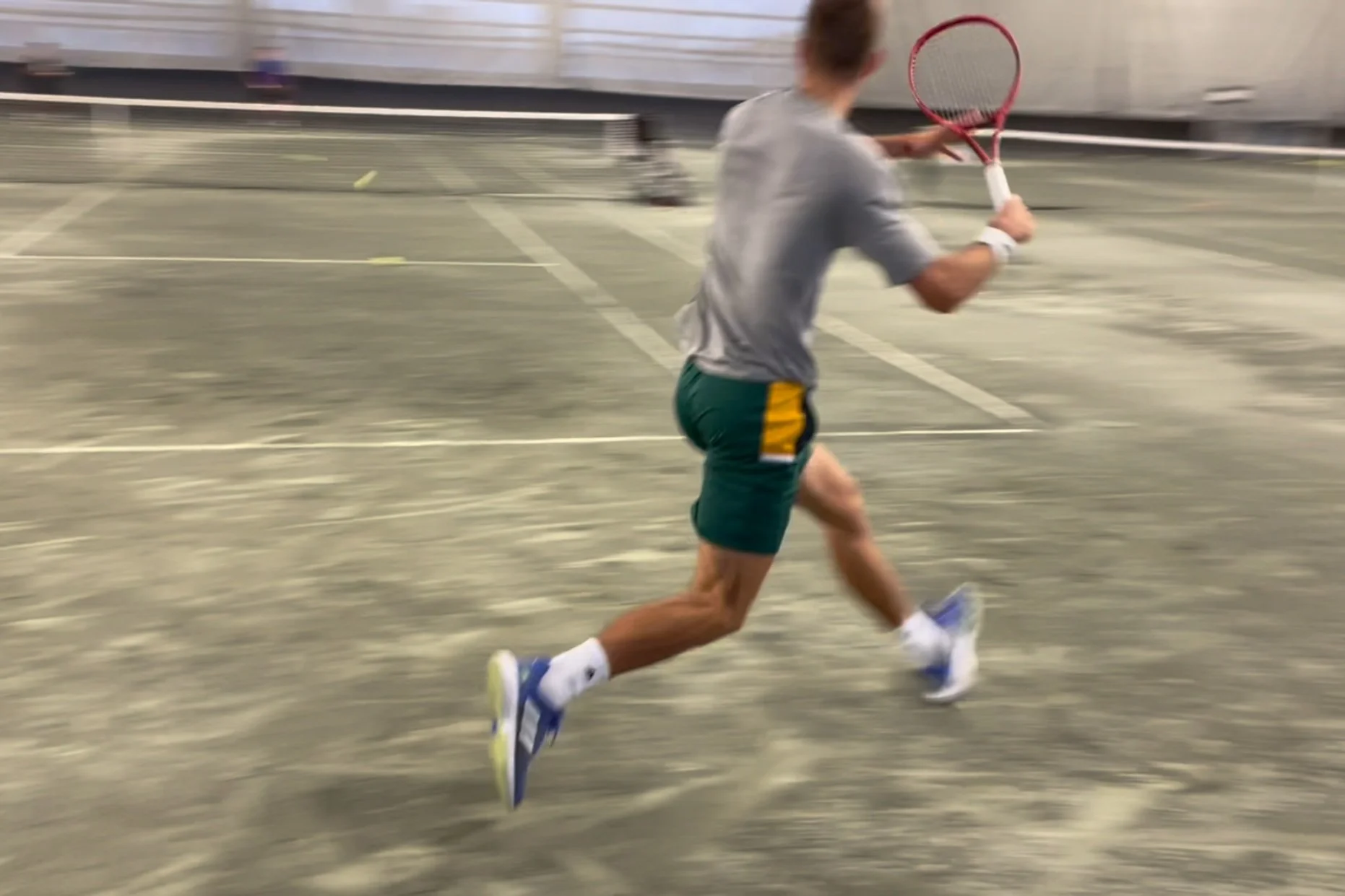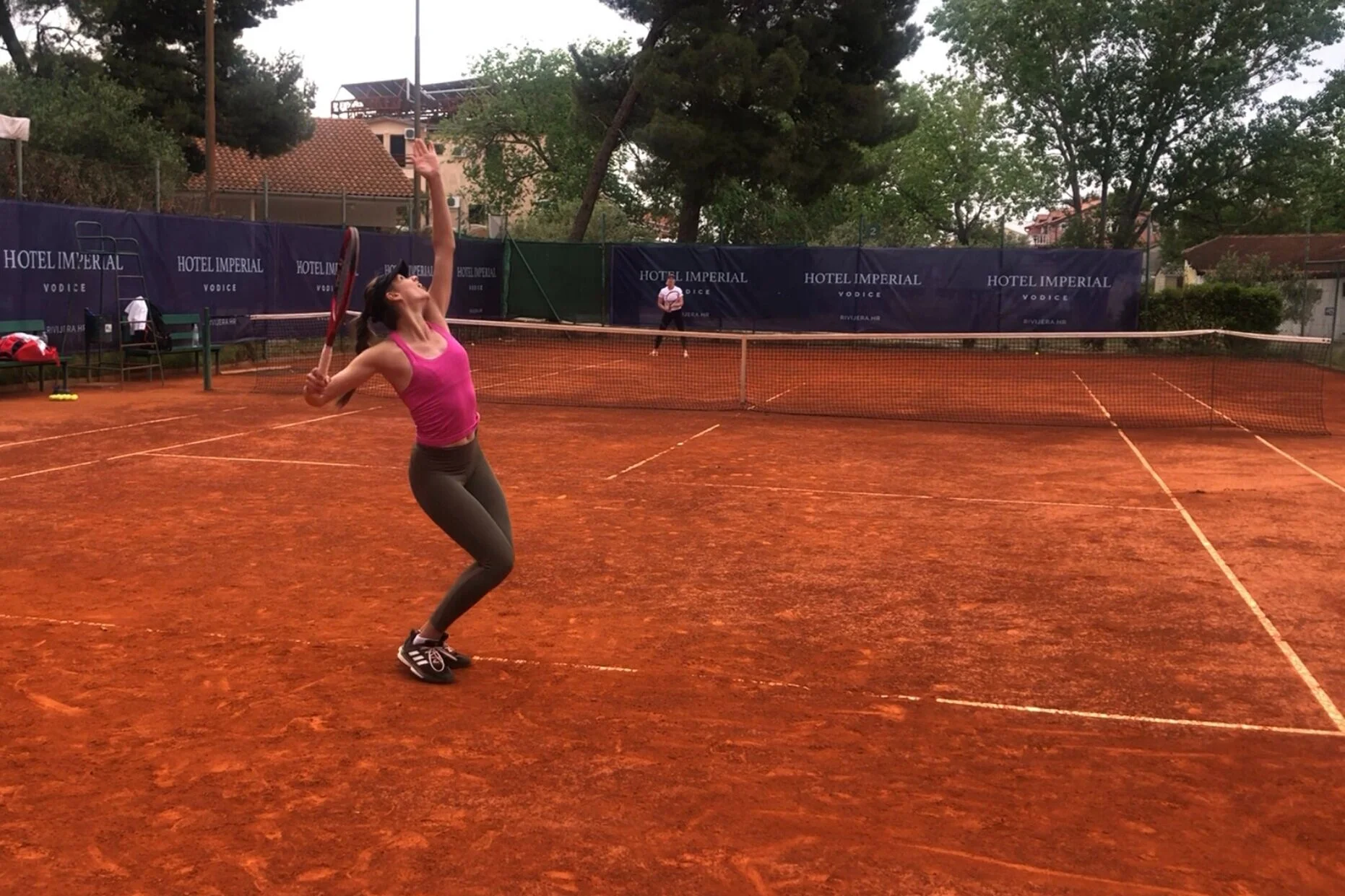What does the typical practice in tennis look like? If you’re someone that’s been around the game for many years, it probably follows a pretty similar structure - mini-tennis, groundstrokes, volleys/overheads and lastly, serves and returns.
But what if a player’s priority is to improve the serve? Does it make sense to hit for an hour (or like in many tennis settings, beyond an hour) prior to serving?
The serve is arguably the most important stroke in tennis - and the one in which players have the most control over. In today’s game, speed is a primary factor for players aiming to develop a potent service weapon. While I personally don’t believe speed is the only strategy of choice on the serve, it’s hard not to see value in gaining velocity on this stroke.
When looking at increasing serve speed, we should consider what it is that enables players to add considerable miles per hour. In other words, what qualities does serve speed (we’re talking first serve here), consist of? Is it strength? Flexibility? Balance?
Coaches, players, parents...even your aunt Judie know the importance of the serve in today’s modern game. More specifically, the first serve. The first serve is so critical that the top 10 servers on the ATP, year after year, win over 77% of their first serve points! And it’s not just on the men’s side. The top 10 women on the WTA win between 69%-79% of first serve points.
Want more proof? Look at Table 1 - in 2016, the top serving men won over 3/4 of their first serve points. On the other hand, when these top pros missed their first serves, they only won between 52% and 55% of their points.
Are you familiar with the ‘10,000 hour rule’? Many of you probably are. If you’re read Malcolm Gladwell’s book, ‘Outliers’, then you definitely are. The premise goes like this; practice something a lot - 10,000 hours, or about 10 years - and you’ll develop expertise in that particular domain. It sounds simple doesn’t it. But is it truly so? Many of us, or our students, have played tennis for well over 10 years, but I wouldn’t necessarily start calling ourselves ‘experts’. Now we might be pretty good, but expertise, as defined by researchers in this field, means far more than just ‘pretty good’ or even ‘really good’.
If you’re anything like me, you may often marvel at the game’s best players. As an observer, I often ask myself, "how do they make it look so easy?" Many of us probably wonder if it's possible for anyone to play at that level. Or if you’re a coach, you wonder if you can ever get an athlete to that level. Just for the record, I don’t believe in talent. Even considering the dominance (and brilliance) of players like Federer, Nadal and the Williams sisters. They all practiced (and practiced and practiced). This isn’t just opinion based, rather, it’s derived from a new-ish branch of motor learning called 'the science of expertise'.
Most tennis players spend hours on the practice courts. And for good reason - tennis is darn tough. The question is, are these hours on court productive hours or redundant? How can we know? To assess whether our training is effective (and that it'll transfer to matchplay) we must first understand the demands of elite tennis.
In this post, we’ll review a study by Pereira et al (2016) that dives into the movement details of professional tennis. Other studies have previously analyzed movement characteristics; but, those studies replaced tournament matches with simulated matchplay. The present study observed movement characteristics via official ITF sanctioned matches.
Picture this, you just got off court after a long 3-set battle. You’re tired, exhausted, fatigued (insert any other word you wish). The last thing you want to do is spend another 30 minutes or more recovering from the match. But guess what, if you’re a junior who’s playing another match the same day or a pro playing a match the following day, you’ve got no other choice. Well that’s not entirely true, you do have another choice and that’s to do nothing at all and basically just show up for your next match.
A fairly recent retrospective study from Sports Health: A Multidisciplinary Approach analyzed serve volume in professional and junior tennis players. The researchers sought out to find how many serves are hit in a set (and match) by pros and juniors. The aim of the study was to use this serve data to develop an interval serve & groundstroke training program for elite tennis players. Although others have attempted to devise this type of program for tennis players, this is the first to my knowledge that has looked at more recent serve data while at the same time developing a program that took into account intensity (as a % of max speed) rather than just volume (i.e. number of serves).
There’s no argument that the first serve is quite important on both the men’s and women’s tours. The percentages speak for themselves - the top servers on tour win about 3 out of every 4 points when the first one goes in and only about half the points when they miss the first serve. Those are the stats. And although spin, direction, patterns etc. have a lot to do with that, it seems that the bigger your serve, the more points you win.
Which brings me to the focus of this article. I recently started a 6-week pilot study to see if an overload throwing program can improve serve speed. More specifically, I’ll be throwing a weighted ball (similar to a medicine ball only smaller) twice per week and tracking serve speed on a weekly basis.
There’s no question the shoulder takes a beating in tennis. I mean, players use it on every shot. Whether that’s to create lots of torque to hit a big forehand or to stabilize the shoulder when punching a volley...the shoulder has many functions and roles. But perhaps the biggest toll on the shoulder occurs in a movement you wouldn’t normally consider...the deceleration phase (aka the follow-through phase) of the serve. This is the moment after impact where the posterior muscles of the shoulder act in an eccentric manner to essentially stop the head of the humerus from being dislodged from the glenoid fossa (aka think arm dislocating from shoulder...that wouldn’t be fun). Ellenbecker & Kovacs (2008) call the deceleration phase “the most violent of the tennis serve”. That’s a pretty big statement, and probably something that needs to be considered in the training of the tennis shoulder. But why exactly is this phase of the serve so critical? What type of strength is necessary? And what kind of exercises can tennis players incorporate into their program to optimize the serve keep the shoulder healthy? We’ll explore all of these points in this article, so read on.
Not enough is written about female athletes. They’ve got charisma, class and most of all, they’re damn good at sport. In tennis, the women’s game is constantly improving. Not only are women hitting the cover off the ball, but more and more feel & touch are becoming a part of their arsenal. Many believe the women’s game is still one-dimensional - but in the past several years, different types of game styles have emerged. Look at Radwanska, Halep and even Kerber - they’ve got variety. Not to mention the level of women's tennis has strenghtened - you just never know who’s gonna make it deep into a slam anymore. Sure Serena’s had some streaks where she’s dominated the women’s game but recently, the draws are more open.
Over the years I’ve coached many female tennis players...and I’ve learned a lot. From the tennis court to the weight room and everything in between. I’ll share my experiences in this article…and hopefully shed some light on female players.












